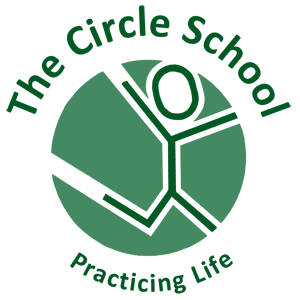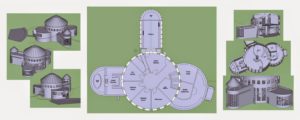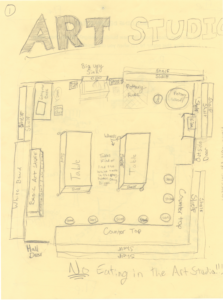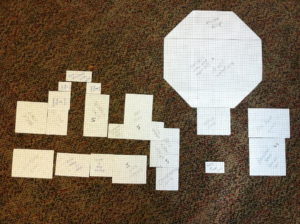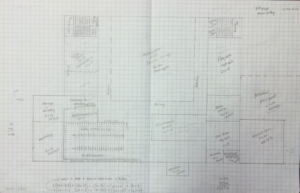Wondering how you go from an idea of a new school to making it a reality? Here’s everything you ever wanted to know about our design process.
Part I: Research & Preparation
- By April of 2013 the Property Search Committee had progressed far enough to warrant formation of the Building Design Committee (“BDC”), even though a property had not yet been found. We asked in the school’s newsletter if it “seems a little crazy to start designing a building when we don’t know when (or even if) we’ll find a campus? We’re hoping if we can find a suitable site, with the help of friends of the school, we might be able to move in the fall of 2014, so we’re doing as much internal work to prepare as possible.” Well, we didn’t quite make that deadline, but you gotta love the optimism!
- The newly created BDC, consisting of 9 students & staff, got straight to work. Blank newsprint was hung in various places around the school with headings like “What do you want in a new school building?” The list grew to many pages of small print, and included “Death Games Arcade,” “more trees” and “more small rooms.” The BDC also met with each corporation to solicit lists of features they wanted (and didn’t want) in rooms that might be optimized for their activities, and suggested they create sketches of the ideal setup.
- In May (2013), parent Maureen Krauth was inspired to create a 3D computer model of a school to show just one of the infinite possibilities of our future school and to get the creative juices flowing for students and staff. Maureen gave a presentation at school and talked about basic elements of design.
- Over the next year, the BDC worked extensively to develop a document to facilitate rapid communication with architects. The committee went through the lists of ideas it had collected many times, categorizing items not only by type and kind, but also by priority: “Essential,” “Prefer,” “Dream On” and “Do this with laws, not facilities.” It also put up several big invitations to sketch ideas for the new building. Many discussions concerned “adjacencies”: which functions must be near or adjacent to other functions, like a bathroom near the playroom, and a place for shoes near where people come in from outside.
- The final version of the committee’s document was passed along to Rich Gribble of By Design Consultants late in the summer of 2014. It detailed goals and ideals for every room proposed for the new building, listed pertinent adjacencies, spelled out priorities (needs vs. wants vs. hopes), and even included sample drawings done by students and staff.
Tune in later to learn how our architect Rich Gribble tackled the task of turning 19 pages of ideas into a structure!
